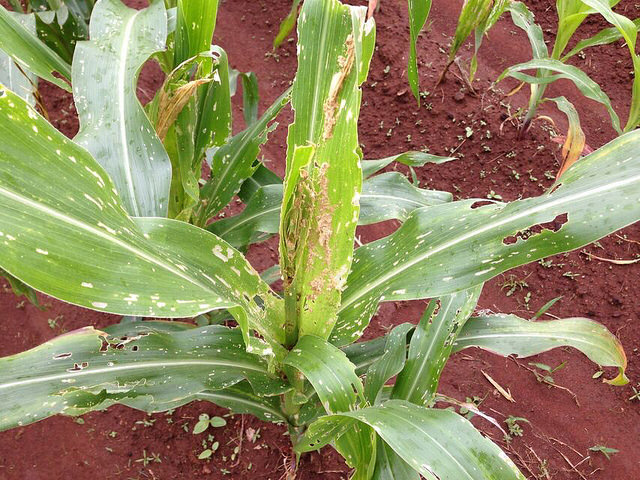Where in the world are agroecological approaches building soil health, beating pests and helping farmers stay productive while protecting the planet? Pedro Sanchez, Research Professor of Tropical Soils at the University of Florida Soil & Water Sciences Department continues our “Agroecology in Action” series with this guest post.
Simply put, agroecology is a form of agriculture that takes maximum advantage of ecological processes.
In some situations, nature is able to function as a closed system; take a tropical forest for example. When nutrients are finely balanced in the system, they are recycled, meaning there is no need for extra nutrient inputs to be added.
Agriculture however, requires a regular harvesting of crops. This results in large amounts of essential nutrients being removed from the soil. Agroecological approaches must return these vital components to the soil, to ensure the soil stays healthy and can continue to grow the crops we require. This can be achieved through efficient fertilization— mineral, organic, or for the best results, both.
Brazilian agriculture has made great use of agroecology. As a major soybean producer, they developed effective methods of applying rhizobium bacteria, which allows soybeans to naturally fix nitrogen from the air into the soil. Nitrogen is an extremely important mineral for soil health and plant growth, and by using this approach, Brazilian farmers have been able to use nature’s processes to the maximum. However, soybeans cannot grow with nitrogen alone; they also need phosphorus. As there is no natural process to fix phosphorus into the soil, it must be added in the form of mineral fertilizers, applied carefully in the correct amounts.
This is a prime example of an instance where it is necessary to supplement so-called natural techniques with manmade technologies.
The same approach applies for conservation agriculture. This practice, which centres on minimum disturbance of the soil to improve soil health, also demands several other practices to be put in place at the same time. Herbicides are required, for example, to kill weeds that are no longer being destroyed when the soil is turned over. Crops must be rotated, to eliminate pests and diseases. Crop residues need to be placed on the soil to protect it and add an organic source of nutrients, and these must be supplemented with precise amounts of the right fertilizer. Only when all of these approaches are applied, both natural and manmade, can conservation agriculture meet its goal of producing food and protecting soils.
Competition and complementarity
Plants naturally compete with but also complement each other. These are two ecological principles that must be balanced when implementing agroecological approaches – competition must be reduced and complementarity maintained or increased.
Agroforestry provides a good example of how this works. Planting nitrogen-fixing trees together with crops that will benefit from the additional nitrogen has showed wonderful results. However, we must keep in mind that a nitrogen-fixing tree is likely to outcompete a plant for light, water and nutrients.
As these examples suggest, the agroecological system is much more complex than it may appear – when you alter one part of the system, another must be altered to redress the balance. In this case, spacing and timing can play a big role in reducing competition. For example, plant the crop first, and allow it to grow. Later, plant the nitrogen-fixing tree at an adequate spacing. Then, when the crop is harvested, the tree will have time to grow with less competition and fix large quantities of nitrogen that the next crop can use.
Halting the march of the deadly fall armyworm
I just returned from Zambia, where the invasive pest, the fall armyworm, is decimating maize crops as it is doing all over Africa. Farmers are at a loss for how to control the attacks. Fall armyworm does have natural enemies in the Americas where it originated, but they did not migrate to Africa with it. We need to find the enemies that are going to halt the devastation it is causing. This is called biological control. This was successfully done to combat the cassava mealy bug in Africa, when swarms of parasitic wasps from one of cassava´s centres of origin in Paraguay were released all over Africa and led to the pest´s eventual decline. Research is underway for similar kinds of interventions, but farmers need an arsenal of solutions now, as an integrated pest management (IPM) approach.

Fields affected by Fall Armyworm in Southern Malawi, Bazale EPA in Balaka District in 2017. Credit: CIMMYT/C. Thierfelde
One technique could offer much hope. Bt maize is a maize plant that has a naturally occurring soil bacterium, Bacillus thuringiensis, bred into it. This results in the crop killing the insects that bite it, like the fall armyworm, while the plant remains completely safe for humans and to other insects that do not attack the crop. This In-built pest resistance is a natural function of many plants, but has been developed by scientists for maize to safeguard this important staple crop, a cornerstone of Africa´s food system. The benefit of this approach is that farmers need to use fewer agrochemicals that might also kill beneficial insects – these can be left alone to perform their natural functions. This, therefore seems to me to be a very agroecological approach that can be added as part of a successful IPM strategy.
Although Bt maize has been utilized extensively in the US, Brazil and South Africa, many African countries do not allow the use of genetically modified technologies. However, in the face of this seemingly unstoppable pest that is wiping out harvests and is likely to leave nations hungry, it may be time to revisit this decision. Zambian scientists I spoke with told me it was a lack of data about the effects of genetically modified crops that prompted them the rule against is use in 2005. Now that such scientific proof exists showing there is no damage to human health or the environment caused by their use, this policy may be reconsidered. It will ultimately be the decision of countries themselves to determine what works for them best, but my hope is that they accept a change that is based on the science. Companies responsible for the breeding have offered to share germplasm with African breeders at no cost, so they may develop their own varieties that would function well in their own environments.
We have come a long way in improving farming practices, to ensure environmental impacts are kept to a minimum. Through careful management of ecological principles, using a range of techniques to promote balance and complementarity, we can ensure our global population is well fed, and our planet is well protected, for generations to come.
Further reading:



